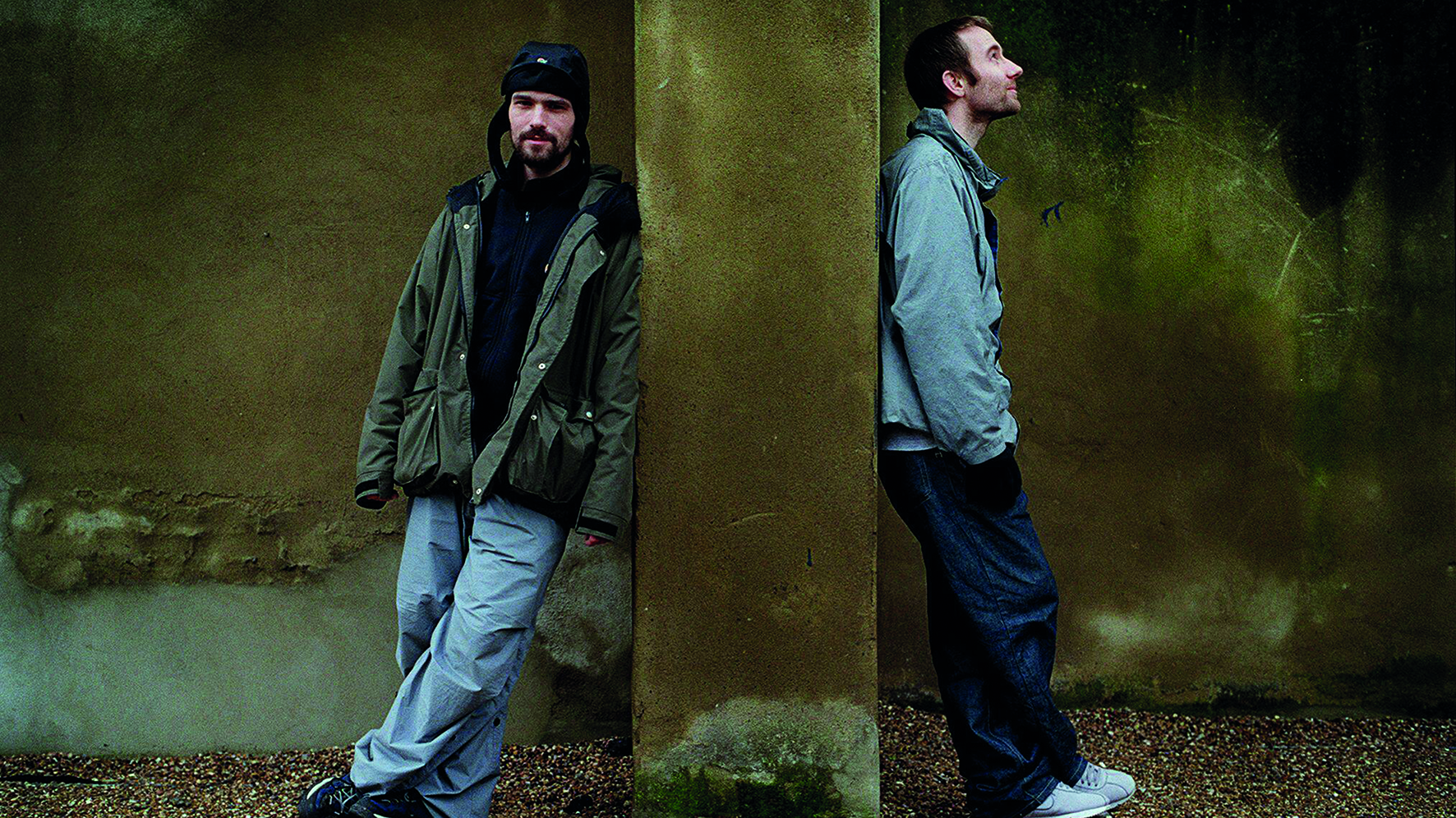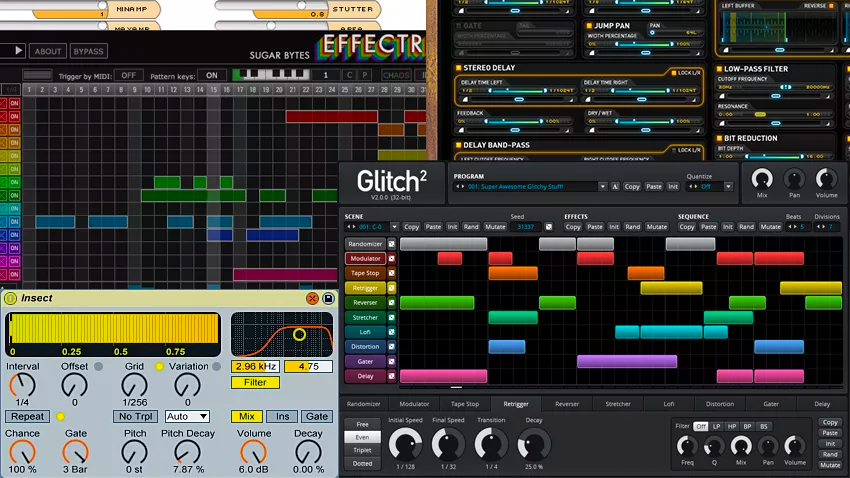The beginner's guide to: glitch
’90s experimentalism meets digital tech to create the surprisingly influential glitch aesthetic

Some genres are more influential than their mainstream appeal may suggest. Glitch almost certainly falls into that category, alongside previously featured musical movements previously featured in this column, such as musique concrète and Oramics.
The roots of the glitch aesthetic are largely defined by digital technology, which sounds inherently different to faulty analogue gear when it malfunctions. Think of faulty or abused analogue gear and the range of tones is quite familiar: amp distortion, tape saturation, analogue overdrive and so on. By contrast, digital glitches are generally harsher and less predictable, as anyone who’s played a corrupted MP3 or a scratched CD will know.
Incorporating digital malfunctions into a musical context feels, in retrospect, like a logical progression of sound art, musique concrète, industrial music and noise techniques. Japanese artist Yasunao Tone was among the first to experiment with what we might now recognise as post-digital glitch techniques, experimenting with manipulating CD playback soon after the format was introduced in the early 1980s. His 1997 album Solo for Wounded CD is a two-part composition created entirely from sounds of scratched CDs.

Video game soundtracks and chiptune music also had a major influence on glitch. There are obvious parallels in terms of digital synthesis and sound manipulation, but also direct links in terms of production techniques.
Notably, Yuzo Koshiro and Motohiro Kawashima’s soundtrack for Sega’s 1994 beat ’em up Streets of Rage 3 employed what Koshiro described as an automated music composition system in order to create “fast-beat techno-like jungle”. The glitchy results were disliked by some fans of Koshiro’s previous work, but proved to be a slow-burning touchstone of glitch production.
Autechre’s Glitch, from the duo’s 1994 Warp album Amber, is often cited as one of the first uses of the term in an electronic music context, though the track itself isn’t particularly glitchy – certainly not by comparison to what the style soon became. ELpH vs Coil’s 1995 album Worship The Glitch is probably a better reference point for the manner in which glitchy sounds cross-pollinated with ambient and experimental production techniques.
Things were aided by software like SuperCollider, Pure Data and Max/MSP, which allowed audio to be processed in glitchy fashion. Advances in DAWs also made it easier to sequence precise, detailed patterns of repetitive, glitchy micro-sounds. By the new millennium, more electronic artists were experimenting with glitch techniques to the point that it could be considered a genre in itself.
Want all the hottest music and gear news, reviews, deals, features and more, direct to your inbox? Sign up here.
The best startpoint could be the Clicks & Cuts compilation series launched by German label Mille Plateaux in 2000. The series documents the surprisingly diverse sounds that fall under that broad umbrella of glitch-adjacent sounds: from the first album alone, compare the crystalline abstraction of Alva Noto’s Prototype N, the metallic clank of Kid 606’s Sonqizzmaster, the ambient shuffle of Frank Bretschneider’s Kern...
There’s an argument that glitch’s biggest mainstream impact wasn’t as a defined genre in itself, but as an aesthetic in other genres, such as glitch hop, which combines glitchy noises with hip-hop-influenced beats.
In fact, the long-term influence of glitch may not yet have peaked. In recent years, new generations are embracing glitch, from hyperpop producers such as AG Cook embracing weird and wonderful glitch-inspired sounds in pop hits for the likes of Charli XCX, through to the TikTok glitchcore aesthetic, in which pointedly retro video edits are mashed together with hyperpop-inspired emo rap. The influence of glitch lives on.
The past, present and future of glitch
Past: Yuzo Koshiro and Motohiro Kawashima – Streets of Rage 3 OST
Critically unacclaimed on release in 1994, the Streets of Rage 3 music didn’t immediately become a cult classic like so many other Sega soundtracks. In retrospect, it’s a more challenging listen than the eclectic hip-hop and techno-inspired soundtracks of previous games in the beat ’em up series, but it’s an obvious precursor to glitch aesthetics in electronic music. You can hear it all on YouTube if you don’t fancy tracking down an original console version.
Present: Hyperpop
’90s glitch purists might sneer, but some of the most fascinating glitch in recent years has been concealed within the Trojan horse of pop production, spearheaded by AG Cook’s PC Music collective. Cook’s curated Hyperpop playlist on Spotify is as good a starting point as any, but Charli XCX’s How I’m Feeling Now (2020) and the late SOPHIE’s Oil of Every Pearl’s Un-Insides (2018) prove that the sound also works just as well in a full-length album format.
Future: Glitchcore
Boomers, look away now. The frighteningly Gen Z world of TikTok may be a step too far for older listeners, but it almost certainly represents the future of glitch. Search for #glitchcore videos and you’ll find thousands of knowingly self-aware #eyestrain edits mashing together glitchy aesthetics with glitchy music from the broad spectrum of hyperpop and SoundCloud rap. Bewildering and terrifying to anyone over the age of 24? Probably.


Future Music is the number one magazine for today's producers. Packed with technique and technology we'll help you make great new music. All-access artist interviews, in-depth gear reviews, essential production tutorials and much more. Every marvellous monthly edition features reliable reviews of the latest and greatest hardware and software technology and techniques, unparalleled advice, in-depth interviews, sensational free samples and so much more to improve the experience and outcome of your music-making.
